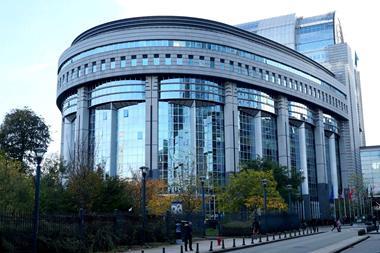EU rulemakers have reached a provisional agreement on the regulation of ESG ratings seven months after the European Commission set out its proposal for rules for this part of the sustainable finance industry.
The new rules were agreed between a delegation of MEPs, led by Aurore Lalucq, and the Belgian Presidency of the Council, representing Member States.
Lalucq described the agreement as “a historic breakthrough for sustainable finance”.
“It was high time to establish clear rules in order to improve transparency in the ESG rating process and thereby restore confidence in the sustainable finance sector,” she added.
“Only this can allow ESG criteria to be useful tools serving the ecological and social transition,” she said.
Vincent Van Peteghem, Belgian minister of finance, echoed this, saying: “Increasing investor confidence through transparent and regulated ESG ratings can have a significant impact on our transition to a more socially responsible and sustainable future.”
The agreed-upon text has not been made public. The provisional political agreement is subject to approval by the Council and the Parliament before going through the formal adoption procedure.
The Council and Parliament highlighted different features of the regulation in their announcements about the agreement, and there is also some contradiction in their description of certain aspects of the regulation.

According to the European Parliament’s announcement, “as a rule” separate environmental (E), social (S), and governance (G) ratings have to be provided rather than a single metric rather that aggregates the factors.
According to the Council, however, the agreement “foresees the possibility to provide separate E, S and G ratings” and if a single rating is provided, the weighting of the E, S and G factors should be explicit.
Data providers not in scope
One of the changes that investor bodies such as pension fund association PensionsEurope wanted to see to the Commission’s proposal was the inclusion of ESG data providers in the scope of the rules.
This did not happen although according to Lalucq, the MEPs and Belgian Presidency agreed to include a clause in the text to review the directive within three years on the matter of the inclusion of data providers and methodologies.
A key requirement of the new rules is that ESG rating providers will need to be authorised and supervised by the European Securities and Markets Authority (ESMA) and comply with transparency requirements, in particular with regard to their methodology and sources of information.
The Council said that ESG rating providers established outside the EU that wish to operate in the EU will need to obtain an endorsement of their ESG ratings by an EU authorised ESG rating provider, a recognition based on a quantitative criterion or be included in the EU registry of ESG rating providers on the basis of an equivalence decision.
The agreed new rules are also said to include a “lighter, temporary and optional registration regime” of three years for small undertakings and groups providing ESG ratings. Small ESG rating providers who opt in under the lighter regime will not have to pay ESMA supervisory fees.
‘Double materiality’
The Parliament said that under the rules, if an ESG rating covers the ‘E’ factor, information would need to be provided on whether that rating takes into account the alignment with the Paris Agreement and any other relevant international agreements. If an ESG rating covers the S and G factors, information must be given on whether that rating takes into account any relevant international agreements.
The Parliament also highlighted an apparent win for MEPs keen for ESG ratings to go beyond a financial risk perspective. It said the agreed rules “add provisions to ensure that the rating agency should explicitly disclose whether the delivered rating assesses how the rated entity affects and is affected by E, S and G factors, i.e. whether the delivered rating addresses both material financial risk to the rated entity and the material impact of the rated entity on the environment, social and governance factors, or whether it takes into account only one of these”.
“In this way, ESG raters are encouraged to address the material impact of the rated entity on the environment and society (double materiality) more than is currently the case,” it added.
The agreed rules also appear to include disclosure requirements for certain financial actors. According to the Council, the Member States and Parliament also agreed that if financial market participants or financial advisers disclose ESG ratings as part of their marketing communications, they will include information about the methodologies used in such ESG ratings on their website. This was done through an amendment of the Sustainable Finance Disclosure Regulation.
The Council looks to have been successful in watering down a requirement for ESG ratings’ houses to separate their business activities. It said the agreement allows providers not to have to set up a separate legal entity for certain activities provided “there is a clear separation between activities and that they put in place measures to avoid potential conflicts of interests”.
However, this derogation would not apply to ESG rating providers that carry out consulting activities, audit activities and credit rating activities, the Council said, and ”ESG rating providers may nevertheless develop benchmarks if ESMA considers that sufficient measures have been put in place to address conflicts of interests”.
Read the digital edition of IPE’s latest magazine
























